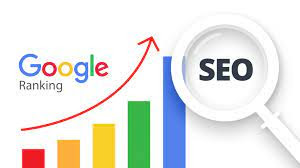Search engine optimization ( SEO) determines how high a website ranks in common search engines like Google. Whatever type of business you run, whether it’s a communications consultancy or a cake shop, an effective SEO strategy is a smart way to boost visibility online, attract new clients, grow your business — and boost profits.
SEO rankings. This helps your website become more visible to potential customers and allows you to appear on search results for specific queries relevant to your business.
In this guide, we're
going to highlight the essential strategies and ways to improve your
SEO ranking. Read on to see some of the recommendations we have compiled
for you.
1.
High-Quality Content
High-quality content is at the core of SEO success. To attract search engines, you need to populate your website with
content.
To start, ensure every page includes at least 300 words of original content. Search engines can detect duplicate content and may penalize your page for using copied content. Content should be broken into shorter chunks, for instance, with H2 subheadings, so it’s easy to scan
do follow the Free backlinks grenterest.
Above all, content should
meet Google’s EAT
criteria: expertise, authoritativeness, and trustworthiness. Google
introduced this terminology in 2020. EAT is particularly critical for sensitive
topic matters, such as health care, science, and law.
Factors that boost an EAT score include
citing respected experts (e.g., if you run a health care website, refer to
medical professionals) and referring to reliable sources (such as “.edu” or
“.gov” sites).
2.
On-Page SEO
Content doesn’t just need
to be high-quality. It also needs to be optimized for search engines. How do
you do that? You can start with this basic checklist for on-page SEO:
·
Choose one primary
keyword for the page and three to four related keywords.
·
Include the primary
keyword in your URL.
·
Ensure your title tag,
meta description, and H1 include your primary keyword
·
Content should be
high-quality and written for an eighth-grade reading level.
·
Vary content structure to
make it scannable (e.g., use H2s and H3s effectively with bullet lists).
·
Make sure internal links
use effective anchor text. Linking between your blog posts is good for
your blog SEO!








0 Comments